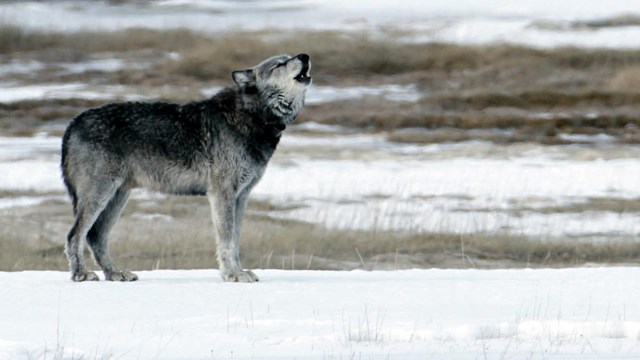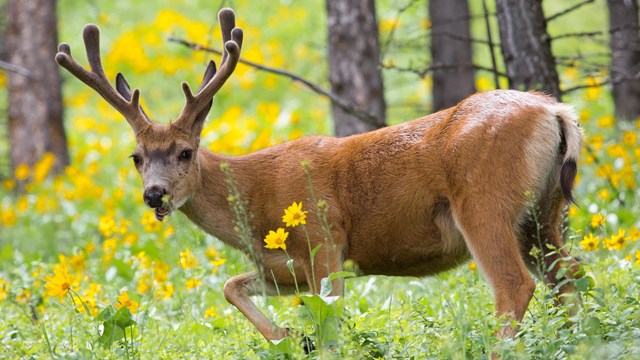
NPS / Neal Herbert Although the white-tailed deer (Odocoileus virginianus) is the most common deer species throughout North America, it has never been abundant in Yellowstone. This may be due to habitat and elevation constraints on the northern range or competition from other ungulates that are better suited to park habitat. White-tailed deer and mule deer are differentiated by their antler shape, and tail size and appearance. Number in YellowstoneScarce, not monitored. Where to SeeAlong streams and rivers in the northern range. Size and Behavior
ResourcesBarmore, W.J. 2003. Ecology of ungulates and their winter range in northern Yellowstone National Park: Research and synthesis, 1962–1970. Mammoth Hot Springs, WY: National Park Service, Yellowstone Center for Resources. Compton, B.B., R.J. Mackie, and G.L. Dusek. 1988. Factors influencing distribution of white-tailed deer in riparian habitats. Journal of Wildlife Management 52(3):544–548. Council, National Research. 2002. Ecological Dynamics on Yellowstone’s Northern Range. Washington, DC: National Academy Press. Frank, D.A. 1998. Ungulate regulation of ecosystem pro- cesses in Yellowstone National Park: Direct and feedback effects. Wildlife Society Bulletin 26(3):410–418. Hill, R.R. 1956. Forage, food habits, and range manage- ment of the mule deer. In W. P. Taylor, ed., The deer of North America: The white-tailed, mule and black-tailed deer, genus Odocoileus, their history and management, 393–414. Harrisburg, PA and Washington, DC: The Stackpole Co. and Wildlife Management Institute. Houston, D.B. 1982. The northern Yellowstone elk: Ecology and management. New York: Macmillian Publishing Co. Mackie, R.J., D.F. Pac, K.L. Hamlin, and G.L. Dusek. 1998. Ecology and management of mule deer and white-tailed deer in Montana. Helena, MT: Department of Fish, Wildlife and Parks. Singer, F.J. and J.E. Norland. 1994. Niche relationships within a guild of ungulate species in Yellowstone National Park, Wyoming, following release from artificial controls. Canadian Journal of Zoology 72:8. Williams, E.S., M.W. Miller, T.J. Kreeger, R.H. Kahn, and E.T. Thorne. 2002. Chronic wasting disease of deer and elk: A review with recommendations for management. Journal of Wildlife Management 66(3):551–563. |
Last updated: April 17, 2025


